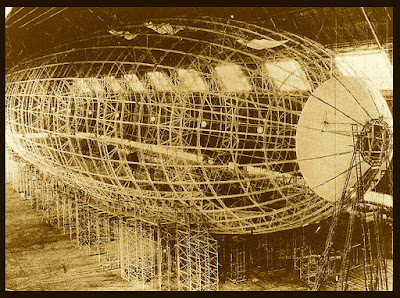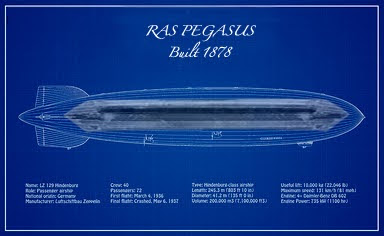The Steampunk Airship
Royal Airship Pegasus was constructed in the Brunel Engineering Yards, Bristol, between 1877-1880.
The frame is an especially alloyed aluminium, while the skin is of titanium.
Pegasus is powered by steam, with heat supplied by an enormous crystal-electro dynamo supplied by the Telsa Laboratory. This dynamo instantly vaporizes water condensed from the atmosphere under extremely high pressure into steam which is then utilized to operate the various mechanical devices which propel the Airship and power its various facilities.
The frame is an especially alloyed aluminium, while the skin is of titanium.
Pegasus is powered by steam, with heat supplied by an enormous crystal-electro dynamo supplied by the Telsa Laboratory. This dynamo instantly vaporizes water condensed from the atmosphere under extremely high pressure into steam which is then utilized to operate the various mechanical devices which propel the Airship and power its various facilities.
Below - Pegasus under construction:
Below - original working blueprint:
Flammable hydrogen gas is not used for levitation of the Pegasus. Lift is instead achieved by using an enormous basalt crystal and ultra-sonic soundwaves. Basalt is both crystalline and magnetic. Gravity is really a frequency, part of Einstein's Unified Field. When crystallized blocks of basalt are resonated at the frequency of gravity (10x12 hertz - the frequency between short radio waves and infrared radiation) they become weightless, and will rise upwards. Height is controlled by altering the frequency slightly.
Below - plan showing the position of the basalt crystal:
Below - more construction:










Comments
Post a Comment